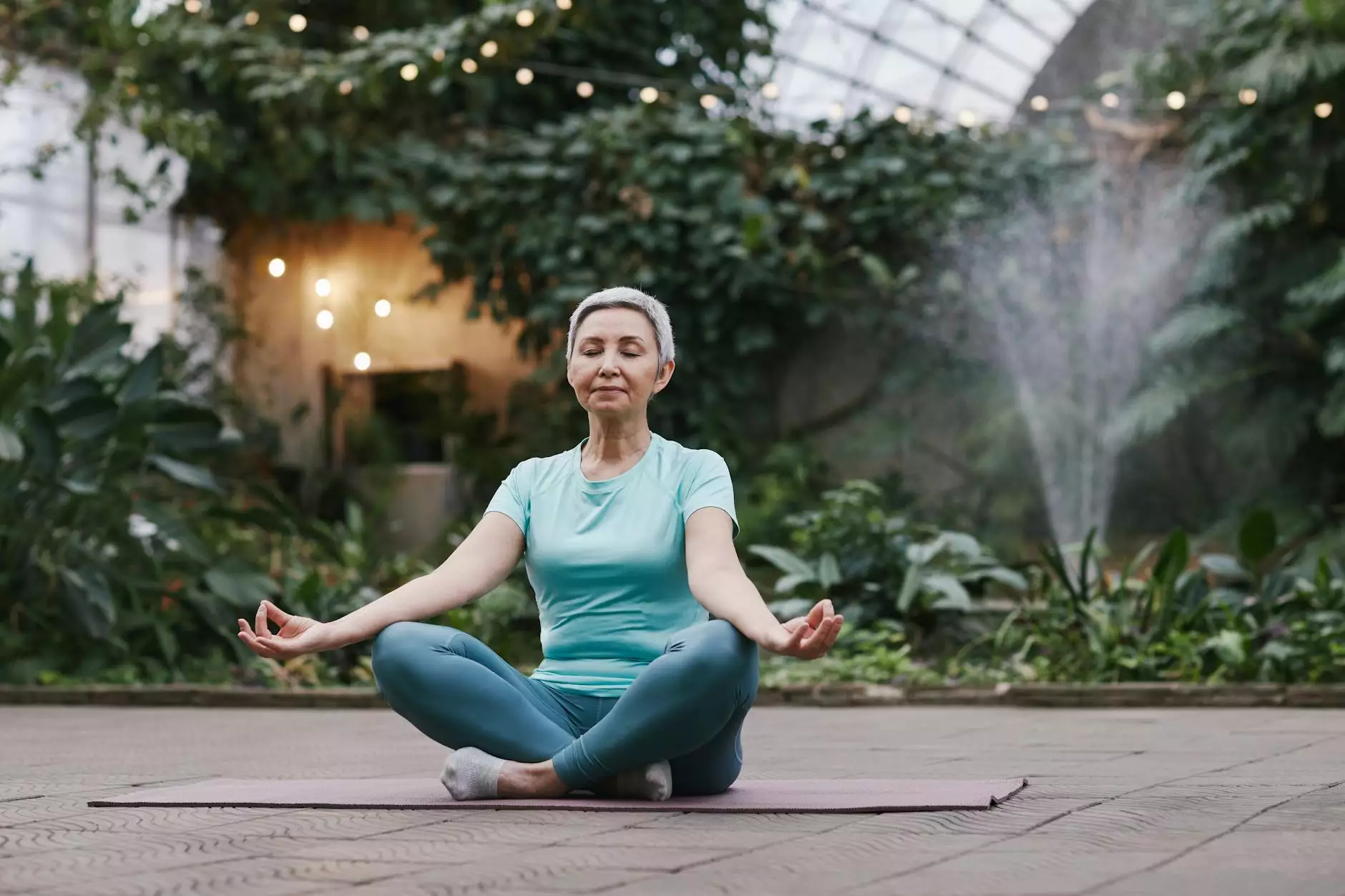Tai Chi – A Great Way for Seniors to Stay Fit
Healthy Living
Introduction
Tai Chi, also known as Tai Chi Chuan, is a gentle and fluid martial art that originated in ancient China. It combines deep breathing exercises with slow and deliberate movements, promoting balance, strength, flexibility, and mental agility. This age-old practice has become increasingly popular among seniors seeking a low-impact exercise option that can enhance their overall wellbeing.
The Benefits of Tai Chi for Seniors
Tai Chi offers numerous benefits for seniors, both physically and mentally. Here are some of the key advantages that make it an excellent choice for older adults:
1. Improves Balance and Reduces Falls
One of the primary concerns for seniors is maintaining their balance and preventing falls. Tai Chi helps improve stability and coordination, reducing the risk of accidents and injuries. By practicing Tai Chi regularly, older adults can enhance their proprioception, which is the body's ability to sense its position in space, thus improving overall balance.
2. Enhances Strength and Flexibility
Tai Chi involves controlled movements that work on different muscle groups throughout the body. This gentle resistance can help seniors build strength and develop flexibility. The slow and continuous motions in Tai Chi exercises promote joint mobility and increase range of motion.
3. Promotes Cardiovascular Health
While Tai Chi is not an intense aerobic workout, it can still provide cardiovascular benefits. The gentle movements and deep breathing increase blood circulation and help maintain a healthy heart. Regular practice of Tai Chi has been found to lower blood pressure and reduce the risk of heart-related diseases.
4. Manages Stress and Improves Mental Wellbeing
Tai Chi is known for its meditative qualities, promoting relaxation and calming the mind. It encourages mindfulness, focusing on the present moment and letting go of stress and worries. This mind-body connection can help seniors manage anxiety, depression, and improve overall mental wellbeing.
5. Supports Joint Health and Alleviates Arthritis Symptoms
Seniors often suffer from joint pain and stiffness, especially those with arthritis. Tai Chi's gentle movements and stretching exercises can help alleviate the discomfort associated with arthritis by promoting joint lubrication and flexibility. Studies have shown that regular Tai Chi practice can reduce pain and improve function in individuals with arthritis.
The Origins and Philosophy of Tai Chi
Tai Chi has a rich history that dates back to ancient China. It was originally developed as a martial art and a form of self-defense. Over time, Tai Chi evolved into a holistic wellness practice encompassing physical, mental, and spiritual elements.
The philosophy behind Tai Chi is rooted in the concept of Yin and Yang, representing opposing forces that complement and balance each other. The practice aims to harmonize these forces within the body and promote the flow of vital energy, known as Qi or Chi.
Getting Started with Tai Chi
If you are a senior looking to incorporate Tai Chi into your fitness routine, here are some tips to help you get started:
1. Consult your healthcare provider
Before beginning any new exercise program, it is essential to consult with your healthcare provider, especially if you have any pre-existing medical conditions or physical limitations. They can provide guidance tailored to your specific needs and ensure that Tai Chi is safe for you.
2. Find a qualified instructor
Look for a qualified Tai Chi instructor who specializes in teaching seniors or beginners. An experienced instructor can guide you through the proper techniques and ensure you are practicing safely and effectively. Consider checking local community centers, senior centers, or martial arts studios for classes.
3. Start with a beginner-friendly form
There are different styles and forms of Tai Chi, such as Yang, Chen, Wu, and Sun. Choose a beginner-friendly form that suits your fitness level and personal preferences. The Yang style, characterized by slow and flowing movements, is often recommended for beginners.
4. Practice regularly
Consistency is key when it comes to reaping the benefits of Tai Chi. Aim to practice for at least 20-30 minutes, 2-3 times a week. Gradually increase the duration and frequency as you become more comfortable and confident in your practice.
5. Wear comfortable clothing and footwear
When practicing Tai Chi, wear loose and comfortable clothing that allows unrestricted movement. Avoid tight or restrictive clothing that may hinder your range of motion. Opt for flexible and supportive footwear or go barefoot, depending on the practice environment.
6. Create a peaceful practice space
Designate a calm and quiet area where you can practice Tai Chi without distractions. Remove any obstacles or hazards that could lead to accidents. Consider playing soothing music or nature sounds to create a serene ambiance.
7. Focus on breath and body awareness
During your Tai Chi practice, pay attention to your breath and body sensations. Breathe deeply and naturally, allowing the breath to guide your movements. Tune in to the subtle shifts and sensations in your body, cultivating mindfulness and presence.
Conclusion
Tai Chi is an extraordinary practice that can benefit seniors in numerous ways, promoting physical fitness, mental wellbeing, and overall quality of life. By embracing the gentle movements and principles of Tai Chi, older adults can enhance their balance, strength, flexibility, and inner calmness. Start your Tai Chi journey today and experience the transformative power it brings to your life.










